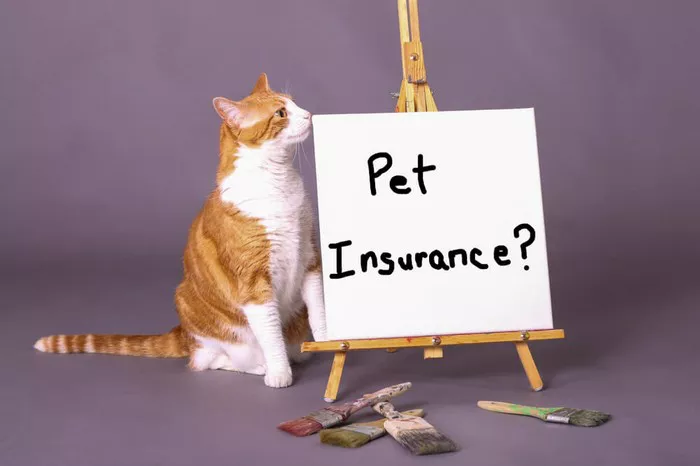Pet owners understand the importance of keeping their furry companions healthy, but sometimes unexpected vet bills can cause stress and financial strain. This is where pet insurance can help ease the burden, but not all policies operate in the same way. Some insurance companies pay the vet directly, while others reimburse the pet owner after the fact. In this article, we will explore what pet insurance options pay the vet directly and how this can benefit you and your pet.
What Is Pet Insurance?
Pet insurance is a type of policy that helps cover the cost of veterinary care for your pets. This insurance can cover various treatments, including accidents, illnesses, surgeries, and routine check-ups. Policies typically offer different levels of coverage, and the premium you pay depends on factors such as the type of pet, their age, breed, and the coverage you choose.
Pet insurance works similarly to human health insurance, where you pay a monthly premium, and in return, the insurance company helps cover part or all of the costs for your pet’s medical care. However, the way payments are handled can vary, and not all insurance companies pay the vet directly.
Why Do Some Pet Insurances Pay the Vet Directly?
There are a few reasons why some pet insurance policies offer direct payment to the vet, rather than reimbursing the pet owner. First, direct payment simplifies the claims process for pet owners. It also helps reduce the financial burden on pet owners who may not have the funds to pay for the treatment upfront and then wait for reimbursement.
Additionally, direct payments streamline the overall process for both the vet and the pet owner. The vet clinic can receive the payment immediately, and the pet owner does not have to worry about submitting claims or waiting for reimbursement checks to arrive.
How Does Pet Insurance That Pays the Vet Directly Work?
When a pet insurance company pays the vet directly, the process typically works as follows:
Visit the Vet: You take your pet to the vet for an appointment, whether it’s for an emergency treatment or a routine check-up.
Present Your Insurance Information: At the time of the visit, you provide the vet with your pet’s insurance details. Some vet clinics may require you to call ahead to confirm that they accept direct payment from your insurance provider.
The Vet Works with the Insurance Company: The vet will work with the insurance company to process the claim. Depending on the policy, the vet may send the bill directly to the insurer for payment.
Payment Is Made Directly to the Vet: The insurance company pays the vet directly, usually covering a portion of or the entire bill, based on your policy’s coverage.
You Pay the Remaining Balance: If there is any remaining balance (such as deductibles or uncovered treatments), you will be responsible for paying that directly to the vet.
The direct payment process can be incredibly convenient, especially for pet owners who don’t have the funds readily available to cover large vet bills.
Advantages of Pet Insurance That Pays the Vet Directly
There are several advantages to choosing pet insurance that pays the vet directly:
Financial Relief: One of the biggest benefits is that you don’t need to pay upfront and wait for reimbursement. This can be especially important in an emergency situation when you might not have the necessary funds on hand.
Simplified Process: The claims process is often much simpler when the insurance company works directly with the vet. You don’t have to worry about filing claims, waiting for approval, or dealing with paperwork.
Convenience: Paying the vet directly means less hassle for you. Your vet will handle the claims process, so all you need to do is focus on your pet’s care.
Immediate Assistance: If your pet requires urgent care, direct payment can help reduce stress. You can get the treatment your pet needs without worrying about how to pay for it.
Faster Treatment: Without the delay of waiting for reimbursement, your vet can begin treatment without delay, knowing that payment is secured.
Disadvantages of Pet Insurance That Pays the Vet Directly
While there are many benefits to pet insurance that pays the vet directly, there are also some drawbacks to consider:
Limited Network: Not all vets accept direct payment from insurance companies. This means that you may be limited to specific clinics or practices that are part of the insurance company’s network.
Higher Premiums: Some policies that offer direct payment to the vet may come with higher premiums. It’s important to weigh the cost of the premium against the potential convenience and benefits.
Policy Restrictions: Depending on the insurer, there may be restrictions on what types of treatments or procedures are covered by direct payment. Always review the policy’s terms and conditions to understand what is and isn’t covered.
No Coverage for Pre-existing Conditions: Like most pet insurance policies, direct payment insurance plans often don’t cover pre-existing conditions. If your pet has an ongoing medical issue, you may need to explore additional coverage options.
Payment Caps: Some policies that pay the vet directly may have a cap on how much they will pay for certain treatments. This could mean that you still have to cover a portion of the bill, even if the vet is paid directly.
How to Find Pet Insurance That Pays the Vet Directly
When searching for pet insurance that pays the vet directly, it’s essential to do thorough research. Here are some steps you can take:
Research Providers: Start by looking at different pet insurance providers to see which ones offer direct payment to vets. Some well-known providers include Nationwide, Trupanion, and Petplan, but it’s essential to confirm the specifics with each provider.
Check for Network Requirements: Some insurance policies may only pay the vet directly if the vet is in the insurance company’s network. Be sure to check the provider’s network list and confirm whether your preferred vet participates.
Review Coverage Details: Not all insurance policies that pay the vet directly cover the same types of care. Be sure to read the fine print and understand what’s covered, especially if you have a pet with special needs.
Compare Prices: While direct payment can be convenient, it may come with a higher premium. Compare the costs of different policies to find one that offers good value for the coverage you need.
Ask About Payment Terms: When speaking with an insurance provider, be sure to ask about how the direct payment process works. Find out how long it takes for the payment to be processed, what documentation is required, and any other relevant details.
Examples of Pet Insurers That Pay the Vet Directly
Several pet insurance companies offer direct payment options. Here are a few examples:
Trupanion: Trupanion is well-known for its direct pay option. They work directly with the vet to process claims and pay them immediately, which can help reduce your out-of-pocket costs at the time of the visit.
Pets Best: Pets Best offers direct payment to vets through their “direct pay” program. With this option, you don’t have to worry about paying upfront and waiting for reimbursement.
Embrace Pet Insurance: Embrace provides an easy claims process, and in some cases, they offer direct payment to vets. Be sure to check if your vet is eligible for direct payment under their policy.
Nationwide: Nationwide also has partnerships with many veterinary clinics to provide direct payments. They offer a range of pet insurance options, including coverage for accidents, illnesses, and wellness care.
Petplan: Petplan offers a comprehensive insurance policy that can include direct payment to the vet for eligible claims. They work with a variety of veterinary practices to make the process easier for pet owners.
Conclusion
Pet insurance that pays the vet directly is a valuable option for pet owners who want to reduce the financial strain of unexpected vet bills. This type of insurance can make the process much simpler, faster, and more convenient. However, it’s essential to carefully review the policy, coverage details, and any network requirements to ensure it meets your needs.
Before selecting a pet insurance policy, be sure to compare different providers and options to find the one that offers the best value and coverage for your pet’s needs. Pet care can be expensive, but with the right insurance, you can ensure that your furry friend gets the care they need without breaking the bank.
Related Topics:
What Is Third Party Pet Insurance and Why Should You Care?




















